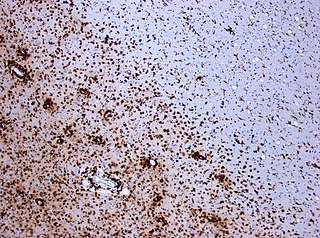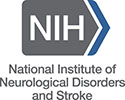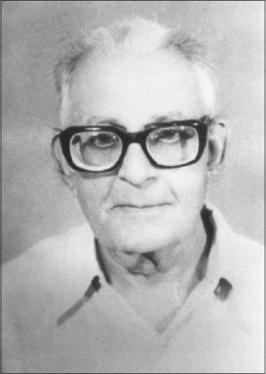Contents
This article needs additional citations for verification .(February 2024) |
| |||||
| Decades: | |||||
|---|---|---|---|---|---|
| See also: | Other events of 1614 History of Germany • Timeline • Years | ||||
Events from the year 1614 in Germany .
This article needs additional citations for verification .(February 2024) |
| |||||
| Decades: | |||||
|---|---|---|---|---|---|
| See also: | Other events of 1614 History of Germany • Timeline • Years | ||||
Events from the year 1614 in Germany .

Migraine is a genetically-influenced complex neurological disorder characterized by episodes of moderate-to-severe headache, most often unilateral and generally associated with nausea and light and sound sensitivity. Other characterizing symptoms may include nausea, vomiting, cognitive dysfunction, allodynia, and dizziness. Exacerbation of headache symptoms during physical activity is another distinguishing feature.

Neurology is the branch of medicine dealing with the diagnosis and treatment of all categories of conditions and disease involving the nervous system, which comprises the brain, the spinal cord and the peripheral nerves. Neurological practice relies heavily on the field of neuroscience, the scientific study of the nervous system.

Multiple sclerosis (MS) is an autoimmune disease in which the insulating covers of nerve cells in the brain and spinal cord are damaged. Being a demyelinating disease, MS disrupts the ability of parts of the nervous system to transmit signals, resulting in a range of signs and symptoms, including physical, mental, and sometimes psychiatric problems. Symptoms include double vision, vision loss, eye pain, muscle weakness, and loss of sensation or coordination. MS takes several forms, with new symptoms either occurring in isolated attacks or building up over time. In relapsing forms of MS, between attacks, symptoms may disappear completely, although some permanent neurological problems often remain, especially as the disease advances. In progressive forms of MS, bodily function slowly deteriorates once symptoms manifest and will steadily worsen if left untreated.

Cerebral palsy (CP) is a group of movement disorders that appear in early childhood. Signs and symptoms vary among people and over time, but include poor coordination, stiff muscles, weak muscles, and tremors. There may be problems with sensation, vision, hearing, and speech. Often, babies with cerebral palsy do not roll over, sit, crawl or walk as early as other children. Other symptoms may include seizures and problems with thinking or reasoning. While symptoms may get more noticeable over the first years of life, underlying problems do not worsen over time.

The National Institute of Neurological Disorders and Stroke (NINDS) is a part of the U.S. National Institutes of Health (NIH). It conducts and funds research on brain and nervous system disorders and has a budget of just over US$2.03 billion. The mission of NINDS is "to reduce the burden of neurological disease—a burden borne by every age group, every segment of society, and people all over the world". NINDS has established two major branches for research: an extramural branch that funds studies outside the NIH, and an intramural branch that funds research inside the NIH. Most of NINDS' budget goes to fund extramural research. NINDS' basic science research focuses on studies of the fundamental biology of the brain and nervous system, genetics, neurodegeneration, learning and memory, motor control, brain repair, and synapses. NINDS also funds clinical research related to diseases and disorders of the brain and nervous system, e.g. AIDS, Alzheimer's disease, epilepsy, muscular dystrophy, multiple sclerosis, Parkinson's disease, spinal cord injury, stroke, and traumatic brain injury.

Frontotemporal dementia (FTD), also called frontotemporal degeneration disease or frontotemporal neurocognitive disorder, encompasses several types of dementia involving the progressive degeneration of the brain's frontal and temporal lobes. FTD is the second most prevalent type of early onset dementia after Alzheimer's disease. Men and women appear to be equally affected. FTD generally presents as a behavioral or language disorder with gradual onset. Signs and symptoms tend to appear in late adulthood, typically between the ages of 45 and 65, although it can affect people younger or older than this. Currently, no cure or approved symptomatic treatment for FTD exists, although some off-label drugs and behavioral methods are prescribed.
Conversion disorder (CD), or functional neurologic symptom disorder (FNsD), is a functional disorder that causes abnormal sensory experiences and movement problems during periods of high psychological stress. Individuals with CD present with highly distressing neurological symptoms such as numbness, blindness, paralysis, or convulsions, which are not consistent with a well-established organic cause and can be traced back to a psychological trigger.
Movement disorders are clinical syndromes with either an excess of movement or a paucity of voluntary and involuntary movements, unrelated to weakness or spasticity. Movement disorders present with extrapyramidal symptoms and are caused by basal ganglia disease. Movement disorders are conventionally divided into two major categories- hyperkinetic and hypokinetic.

The National Hospital for Neurology and Neurosurgery is a neurological hospital in Queen Square, London. It is part of the University College London Hospitals NHS Foundation Trust. It was the first hospital to be established in England dedicated exclusively to treating the diseases of the nervous system. It is closely associated with University College London (UCL) and in partnership with the UCL Institute of Neurology, which occupies the same site, is a major centre for neuroscience research.
Herbert Henri Jasper was a Canadian psychologist, physiologist, neurologist, and epileptologist.
Neuropsychiatry is a branch of medicine that deals with psychiatry as it relates to neurology, in an effort to understand and attribute behavior to the interaction of neurobiology and social psychology factors. Within neuropsychiatry, the mind is considered "as an emergent property of the brain", whereas other behavioral and neurological specialties might consider the two as separate entities. Those disciplines are typically practiced separately.

Norman Geschwind was a pioneering American behavioral neurologist, best known for his exploration of behavioral neurology through disconnection models based on lesion analysis.

Amyotrophic lateral sclerosis (ALS), also known as motor neurone disease (MND) or Lou Gehrig's disease in the United States, is a rare, terminal neurodegenerative disorder that results in the progressive loss of both upper and lower motor neurons that normally control voluntary muscle contraction. ALS is the most common form of the motor neuron diseases. ALS often presents in its early stages with gradual muscle stiffness, twitches, weakness, and wasting. Motor neuron loss typically continues until the abilities to eat, speak, move, and, lastly, breathe are all lost. While only 15% of people with ALS also fully develop frontotemporal dementia, an estimated 50% face at least some minor difficulties with thinking and behavior. Depending on which of the aforementioned symptoms develops first, ALS is classified as limb-onset or bulbar-onset.

A neurological disorder is any disorder of the nervous system. Structural, biochemical or electrical abnormalities in the brain, spinal cord or other nerves can result in a range of symptoms. Examples of symptoms include paralysis, muscle weakness, poor coordination, loss of sensation, seizures, confusion, pain, tauopathies, and altered levels of consciousness. There are many recognized neurological disorders, some are relatively common, but many are rare.
Ramamurthi Balasubramaniam was an Indian neurosurgeon, author, editor, a pioneer in neurosurgery in India and often recognized as the Father of Neurosurgery of India. He set up the Department of Neurosurgery at the Government General Hospital, Chennai in 1950, the Department of Neurosurgery at the Madras Medical College and founded the Institute of Neurology, Madras in the 1970s. He was awarded the Padma Bhushan and the Dhanvantri Award for his contribution to the field of Neurosurgery in India. He is also a recipient of the Lifetime Achievement Award of Madras Neuro Trust.
Ashok Panagariya was an Indian neurologist, medical researcher and academic, known for his research on nerve cells and neuromyotonia. He was a vice chancellor of Rajasthan University of Health Sciences, Jaipur and a member of the Planning Board of the Government of Rajasthan. He was a recipient of the Dr. B. C. Roy Award, the highest Indian award in the medical category. Ashok Panagariya was awarded the fourth highest Indian civilian award of Padma Shri by the Government of India in 2014. He died on 11 June 2021 due to COVID-19 complications.

Jacob Chandy was an Indian neurosurgeon and teacher of medical sciences. As the first neurosurgeon in India, he is widely regarded as the father of modern neurosurgery in India. In 1964, the Government of India honoured him with their third highest civilian award, Padmabhushan, for his services in the fields of neurosurgery and medical education.
C. U. Velmurugendran is an Indian neurologist, medical writer and the chairman and head of the Department of Neurology at the Sri Ramachandra Medical College and Research Institute, Chennai. He is an honorary professor at the Sri Venkateswara Institute of Medical Sciences, Tirupati and has contributed chapters to books including Diseases of the Spinal Cord, published in 2012. The Government of India awarded him the fourth highest civilian honour of the Padma Shri, in 2008, for his contributions to medicine.
Madakasira Vasantha Padma Srivastava is an Indian neurologist, medical academic, former professor and writer, serving as the chairperson of Neurology at Paras Healthcare, Gurugram. She is known for pioneering Acute Stroke Programme (Code-Red), a medical initiative for supporting patients afflicted with epilepsy and stroke, incorporating Hyperacute Reperfusion strategies including the thrombolysis program. The Government of India awarded her the fourth highest civilian honour of the Padma Shri, in 2016, for her contributions to medical science.

Baldev Singh was an Indian neurologist. He was best known for collaborative works with neurologists Jacob Chandy, Balasubramaniam Ramamurthi and S. T. Narasimhan and together they have been credited to be pioneers in development of epilepsy surgery in India. They also helped in establishing the Neurological Society of India in 1951 at Madras. After training in the United States of America, he returned to India and established himself at Delhi. He was presented with the Padma Bhushan in 1972 for his contributions in the field of medicine.